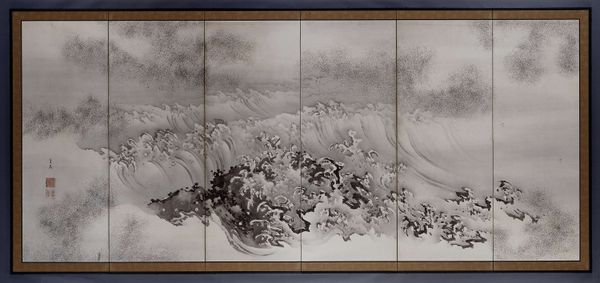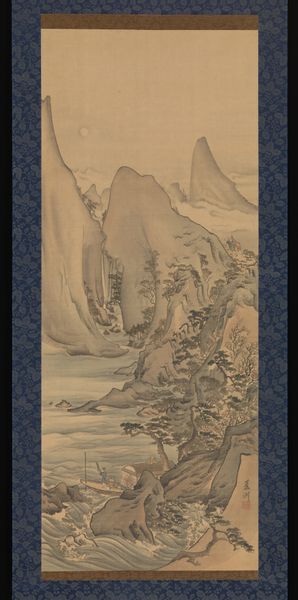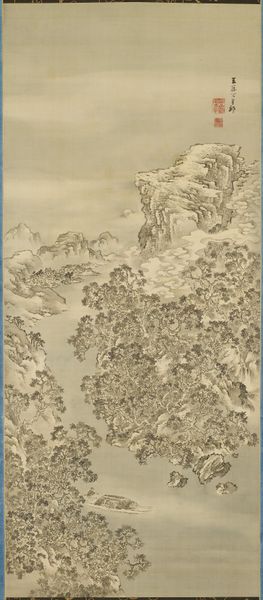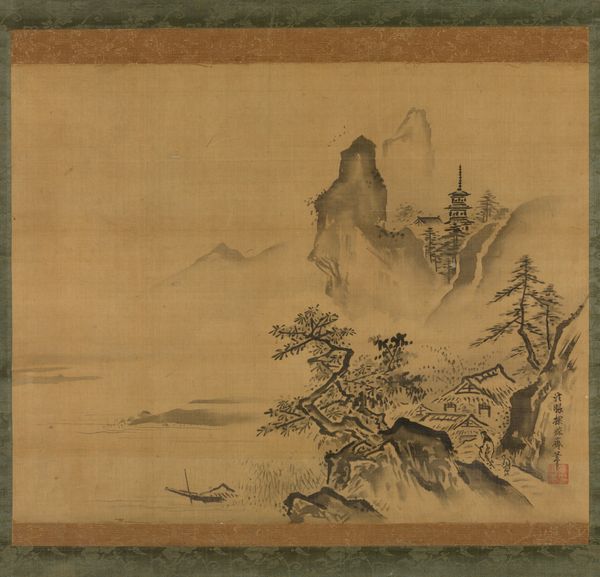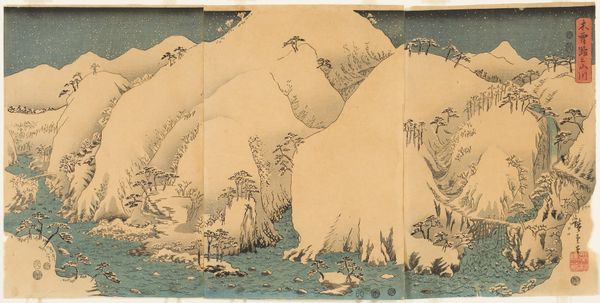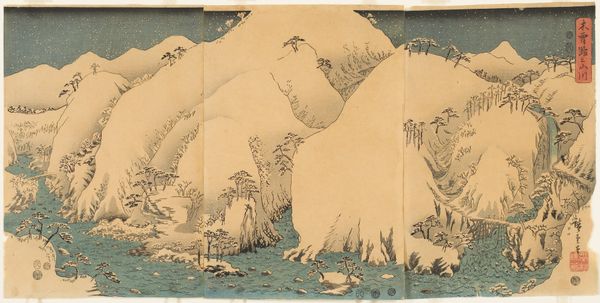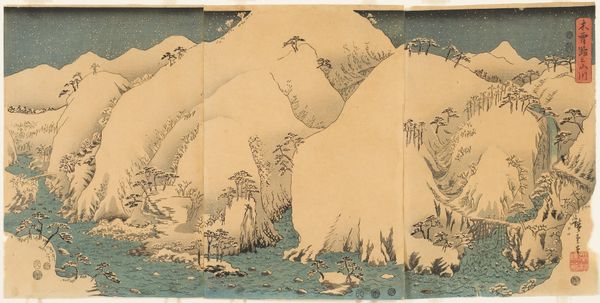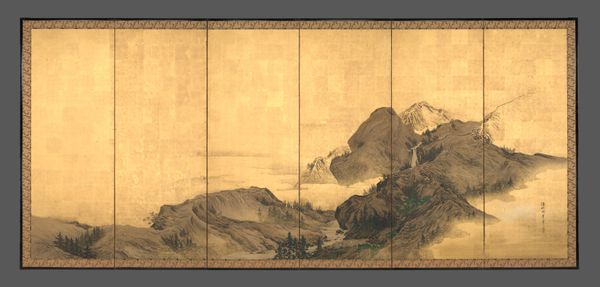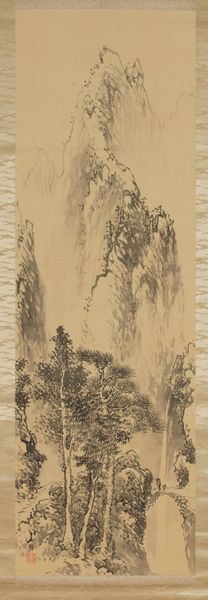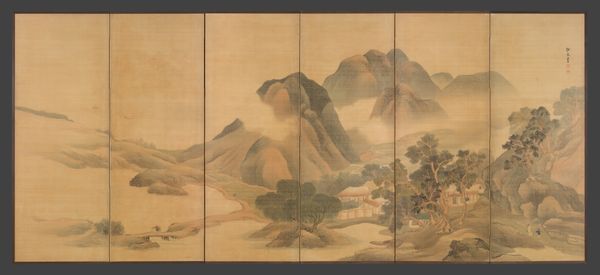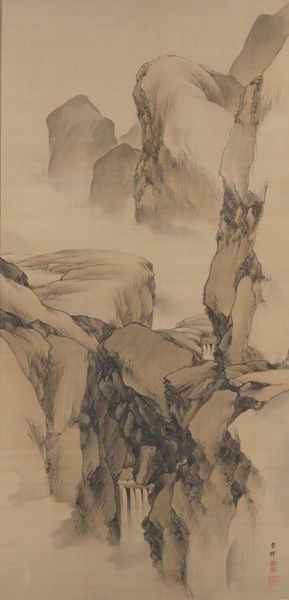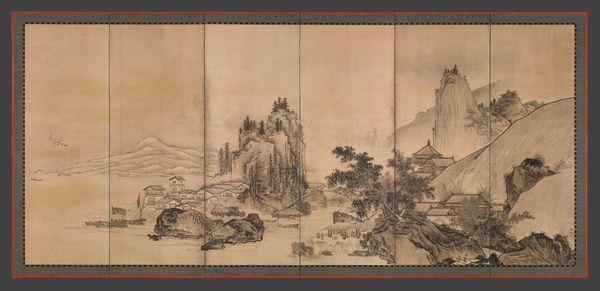
Dimensions: Image (each): 59 5/8 in. x 11 ft. 6 5/8 in. (151.4 x 352.1 cm)
Copyright: Public Domain
Shiokawa Bunrin created this six-panel screen in nineteenth-century Japan using ink and color on paper. It depicts the famous Chinese poet Li Bo visiting Mount Emei. Screens like this one often functioned as status symbols, indicating the wealth and taste of their owners. The choice of subject matter is revealing. Li Bo was a popular figure, celebrated for his romanticism and his unconventional lifestyle. Mount Emei, a sacred Buddhist site, was renowned for its natural beauty. By depicting Li Bo’s visit, Bunrin subtly links his patron to both artistic and spiritual ideals. The monochrome palette and soft brushwork evoke a sense of tranquility and timelessness. The vast, misty landscape dwarfs the small boat carrying the poet, emphasizing the power and grandeur of nature. But Bunrin’s composition also reflects the influence of Western painting, which was increasingly popular in Japan at the time. The result is a work that embodies both traditional Japanese aesthetics and a modern cosmopolitan sensibility. Understanding this artwork involves not just appreciating its aesthetic qualities, but also researching the social and cultural context in which it was made.
Comments
No comments
Be the first to comment and join the conversation on the ultimate creative platform.
